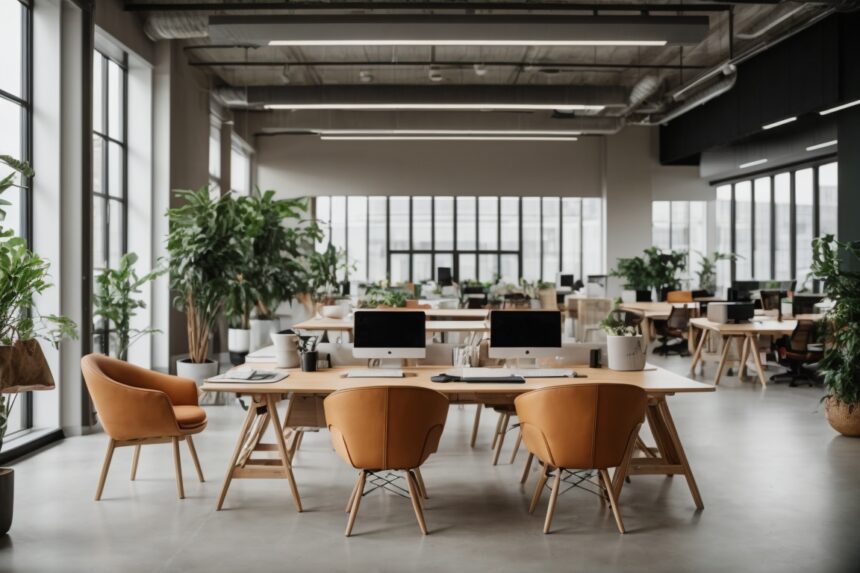Co-working spaces have become a ubiquitous part of the modern work landscape. As remote work and freelancing continue to rise in popularity, these shared workspaces offer a collaborative and flexible alternative to the traditional office. If you’re considering creating or revamping a co-working space, one critical element to consider is the furniture. The right furniture can transform a bland room into an inspiring and productive hub. In this comprehensive guide, we’ll explore 10 co-working furniture ideas to help you create an inviting, efficient, and stylish co-working environment.
The Essence of Co-working Spaces
Co-working spaces have transformed the landscape of modern work, offering an alternative to traditional office setups. They are dynamic environments designed to foster collaboration, innovation, and flexibility. Central to creating the perfect co-working space is the selection of furniture. This guide delves into the intricacies of co-working furniture and how the right choices can turn a mere room into a dynamic, engaging hub.
1: Ergonomic Office Chairs
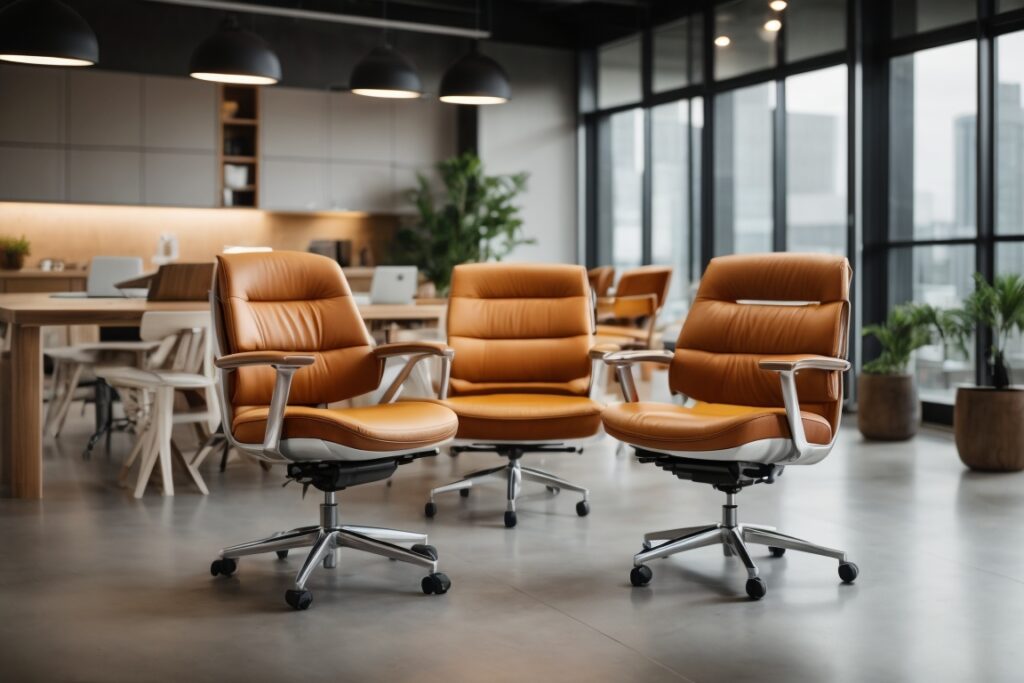
Ergonomic office chairs serve as the cornerstone of any co-working space. These chairs are meticulously designed to offer comfort and support, ensuring an environment conducive to productivity and well-being. They come with adjustable features and lumbar support, making them a pivotal asset in co-working spaces. Additionally, the modern aesthetics of these chairs add a touch of style to your workspace.
2: Height-Adjustable Desks
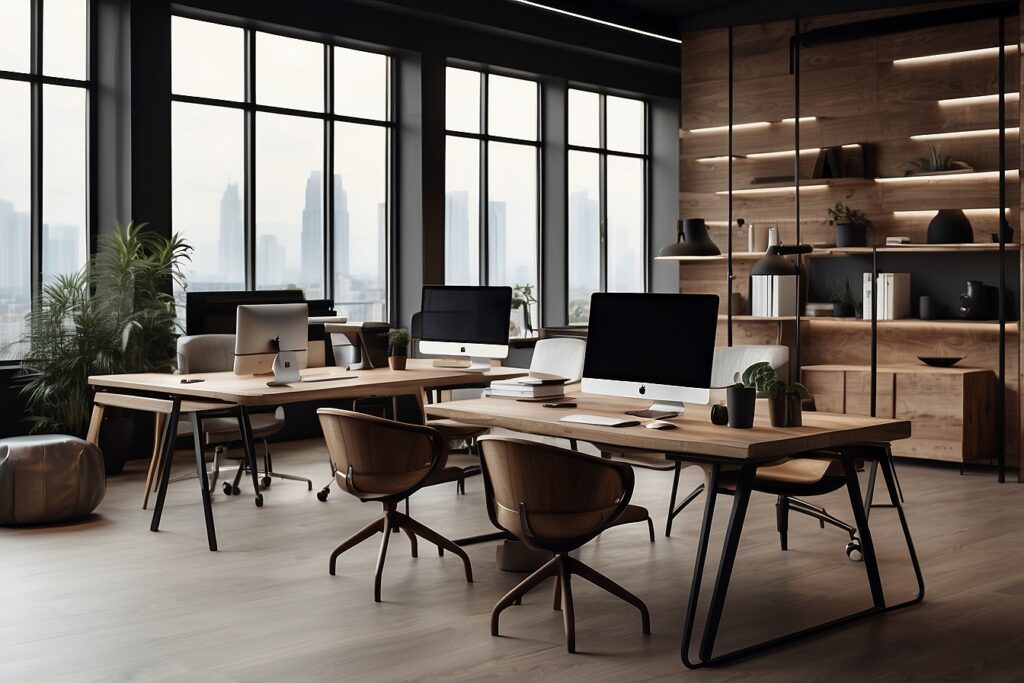
Height-adjustable desks have emerged as an indispensable feature in co-working spaces. Their adaptability caters to a diverse community of co-workers. Whether one prefers a seated or standing posture while working, these desks can be customized to meet individual needs. Promoting proper posture and comfort, these desks contribute to a healthier and more productive workspace.
3: Collaborative Workstations
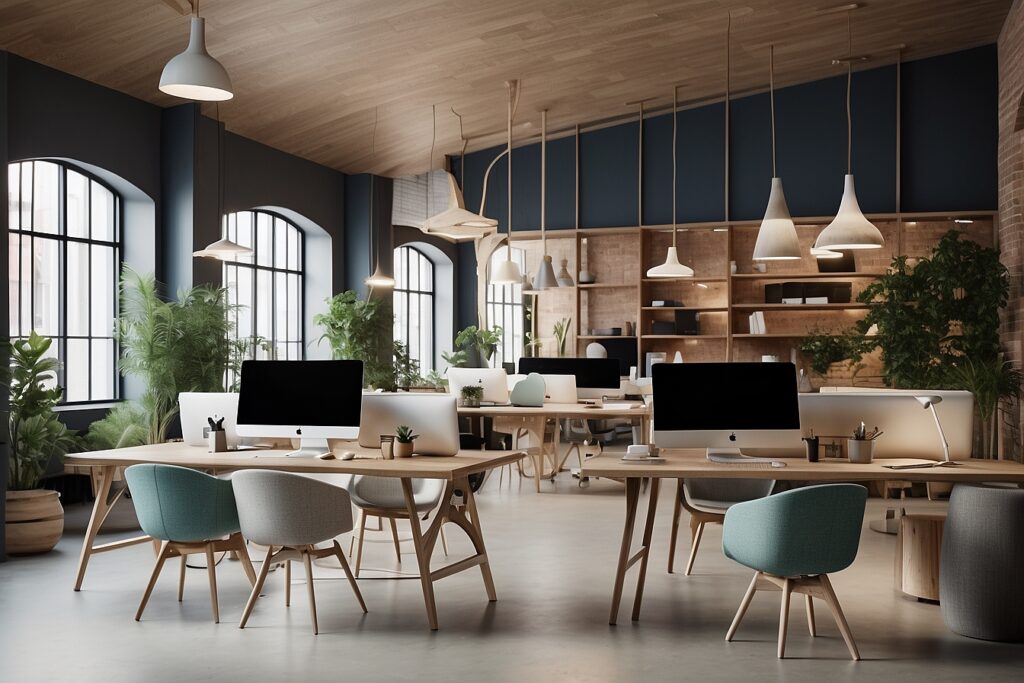
Collaborative workstations exemplify the essence of co-working spaces, emphasizing teamwork and collective brainstorming. They typically consist of long tables with multiple workstations and integrated power outlets, facilitating group endeavors, project work, and idea sharing. This multifunctional furniture element is pivotal in cultivating a culture of collaboration.
4: Cozy Lounge Areas

Co-working spaces aren’t solely about work; they also cater to relaxation and networking. Cozy lounge areas, complete with comfortable sofas, bean bags, and coffee tables, create inviting spaces for informal meetings, networking opportunities, or simply unwinding. These zones introduce a dash of leisure, ensuring your co-working space accommodates diverse needs.
5: Modular Furniture
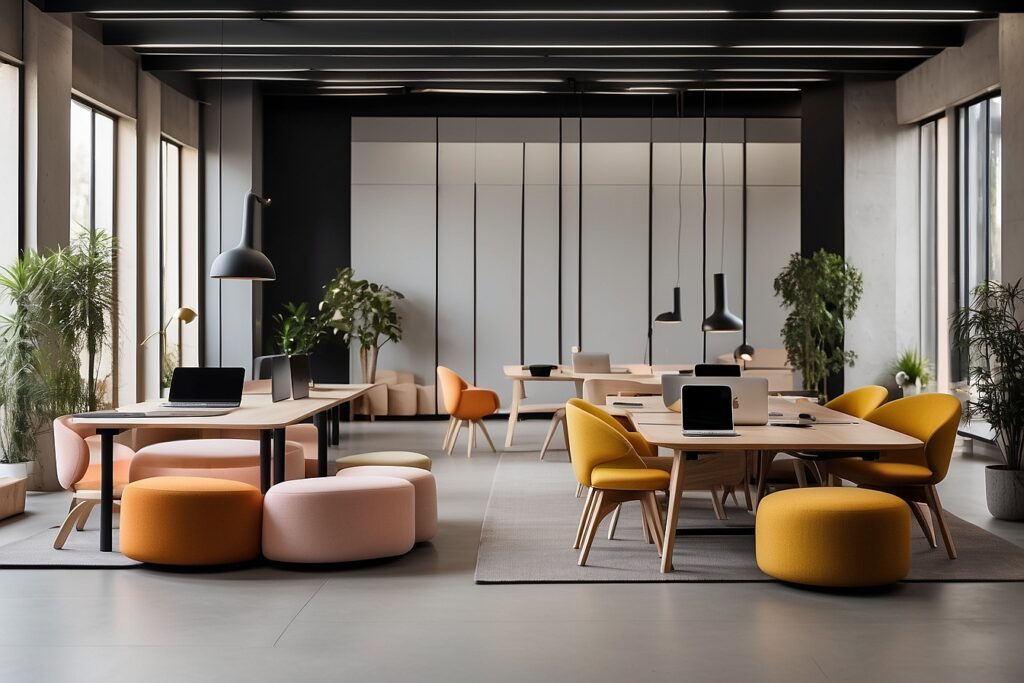
Flexibility is the cornerstone of co-working spaces, adapting to the ever-changing requirements of their occupants. Modular furniture, such as desks and storage solutions, offers this adaptability. It permits rapid reconfiguration of the workspace layout to accommodate varying events, workshops, or shifting user preferences. This furniture category empowers you to maximize the utility of your space.
6: Soundproof Pods
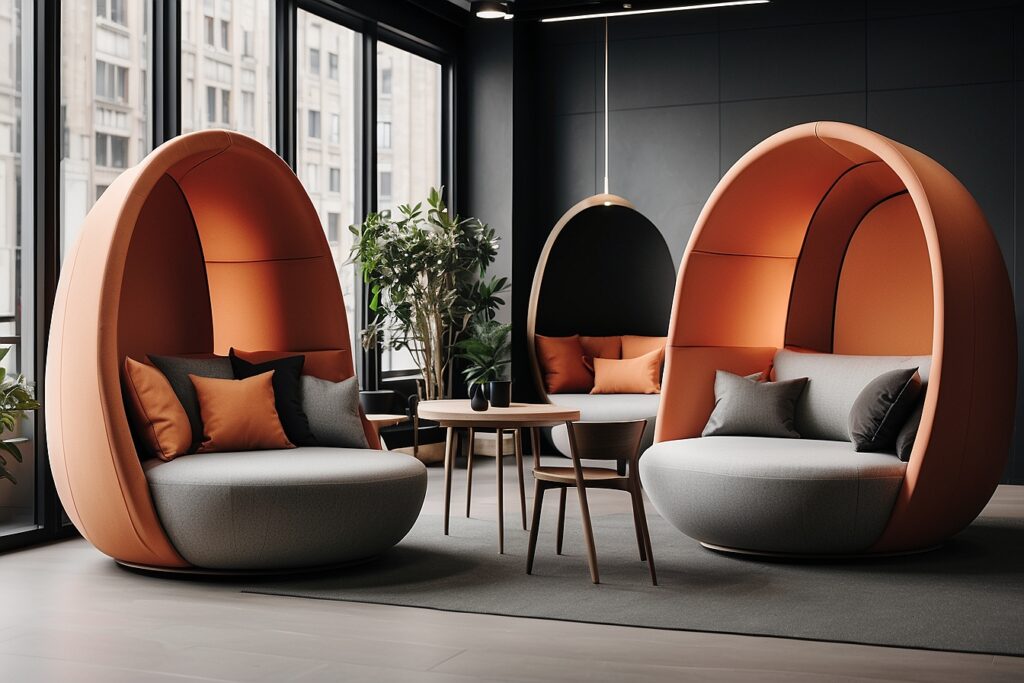
A key challenge in co-working spaces is managing ambient noise, which can be a significant distraction. Soundproof pods or booths address this issue by providing a secluded, noise-isolated environment. These pods are an essential component for hosting private meetings, taking phone calls, or engaging in focused, uninterrupted work. They offer a haven of tranquility amidst the bustling workspace.
7: Greenery and Biophilic Design
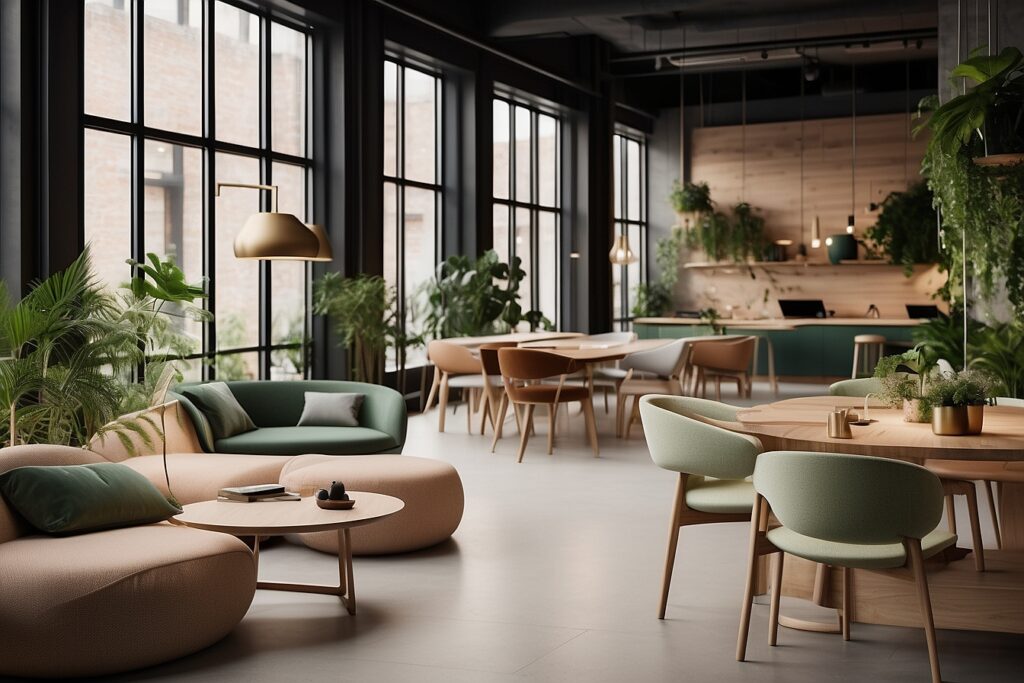
Bringing nature indoors has become a cornerstone of contemporary interior design, and co-working spaces are no exception. The introduction of greenery and biophilic design elements, like plants and natural materials, enhances the ambiance of the workspace. It also has a positive impact on air quality, stress reduction, creativity, and overall well-being. The fusion of nature with the workspace is conducive to a more relaxed and creative atmosphere.
8: Unique and Inspiring Art
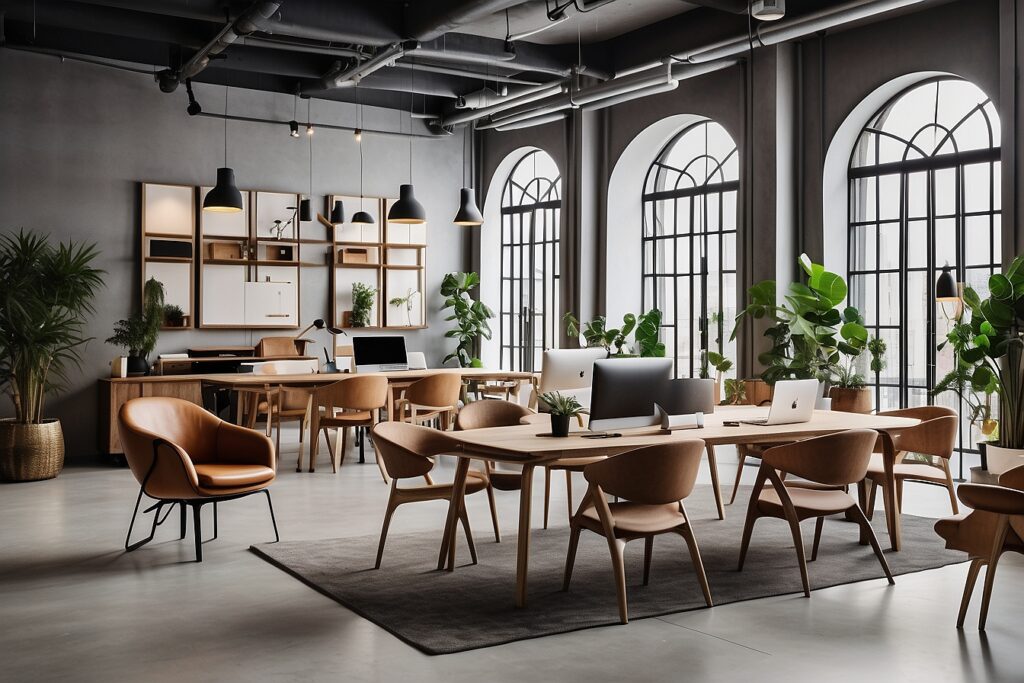
Art is a potent tool for shaping the character of your co-working space. Consider investing in unique and local artwork or vibrant murals that resonate with the culture and identity of your workspace. Art enriches the aesthetic and atmosphere of your workspace, creating a unique environment that inspires creativity and innovation among co-workers.
9: Storage Solutions
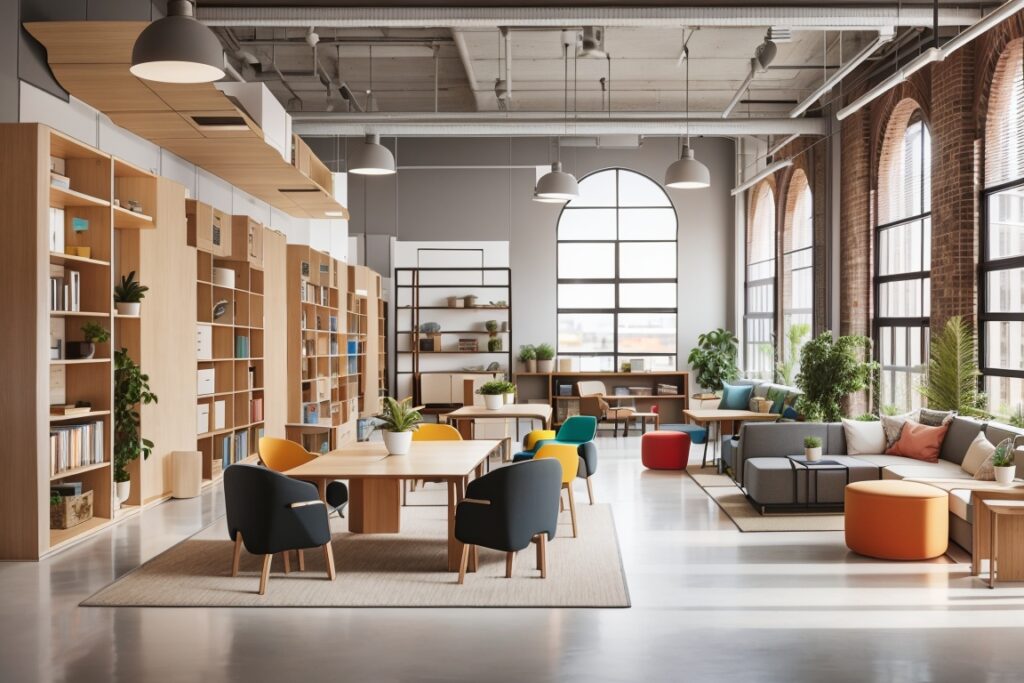
Co-workers often require storage options for their personal belongings and work essentials. To maintain an organized and clutter-free workspace, it is essential to incorporate suitable storage solutions. Options such as lockers, shelving units, or integrated storage can be invaluable, ensuring that everyone’s belongings have a designated space. These solutions streamline the workspace, contributing to a more organized and efficient atmosphere.
10: Lighting Solutions
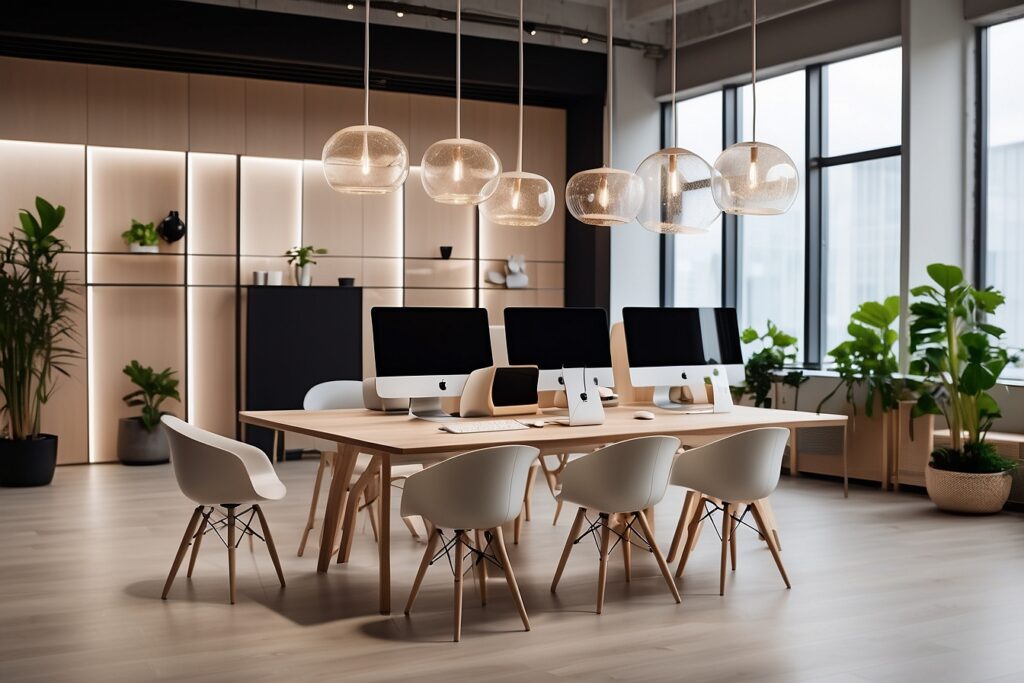
Effective lighting is pivotal in any workspace, and co-working spaces are no exception. Opt for a harmonious blend of natural light and adjustable artificial lighting to cater to various tasks and moods. Smart lighting systems are a contemporary addition, enabling convenient and energy-efficient illumination control. Lighting, when thoughtfully chosen, contributes to a pleasant and functional workspace.
Tips for choosing the right Co-working Furniture:
- Sustainable Furniture Options: The environmental impact of your co-working space is a growing concern. To mitigate this, consider embracing sustainable furniture options. Look for pieces made from eco-friendly materials and those designed with sustainability in mind. This eco-conscious approach not only benefits the environment but also resonates with the values of many co-workers who prioritize sustainability in their workspaces.
- Maximizing Space Efficiency: Efficient space utilization is a fundamental consideration in co-working spaces, which often cater to diverse groups and changing needs. Space-saving furniture, such as foldable tables, stackable chairs, and wall-mounted desks, ensures the optimal use of available area. These elements empower you to adapt your layout with ease, maximizing the utility of your space.
- Maintenance and Durability: Investing in furniture built to withstand the rigors of a shared workspace is paramount. Quality and durability are crucial factors to ensure the longevity and functionality of your furniture. By selecting robust, well-constructed pieces, you reduce the need for frequent replacements and maintenance, ultimately saving time and resources.
- Budget Considerations: Creating a co-working space can be a substantial financial commitment. Thus, it’s essential to carefully weigh your budget when selecting furniture. While quality is crucial, there are cost-effective options available that combine comfort and style, aligning with your financial constraints. This balance ensures the sustainability of your co-working project without compromising quality.
- Personalization and Branding: To make your co-working space truly unique and memorable, consider incorporating personalization and branding elements. Customized furniture, color schemes, and branded features contribute to a distinct identity for your space. This branding can reinforce your workspace’s mission and values, creating a lasting impression on co-workers and visitors.
Maintenance and Flexibility
Sustaining the allure and functionality of your co-working space requires a consistent maintenance strategy. Regular cleaning and upkeep are essential to preserve the aesthetics and operational efficiency of your furniture and infrastructure. Flexibility in this context also involves the adaptability of your maintenance plan to meet the evolving needs of the co-working community.
Conclusion:
In conclusion, co-working spaces represent a dynamic shift in the way we work and collaborate. The selection of the right furniture is a pivotal element in crafting an inspiring and innovative workspace. Whether you are embarking on a new co-working venture or revitalizing an existing one, the trifecta of comfort, adaptability, and aesthetics should guide your furniture choices. With these ten co-working furniture ideas and additional insights, you are equipped to design a co-working space that catalyzes creativity, cooperation, and productivity.
We trust this comprehensive guide to co-working furniture ideas has enriched your understanding and will be instrumental in your quest to create the ideal co-working environment. Please do not hesitate to contact us if you have any more queries or need extra assistance. Best of luck with your co-working space endeavor!
FAQs:
Q1: What are the key features to look for in an ergonomic office chair?
A1: When choosing an ergonomic office chair, key features to consider include proper lumbar support, adjustable seat height, armrests, and backrests, breathable materials, and a swivel base. The chair should be comfortable and supportive for long hours of work.
Q2: How can biophilic design elements benefit a co-working space?
A2: Biophilic design elements, such as plants and natural materials, can benefit a co-working space by improving air quality, reducing stress, increasing creativity, and enhancing overall well-being. They connect people with nature and create a more pleasant and calming atmosphere.
Q3: What are soundproof pods, and why are they important in co-working spaces?
A3: Soundproof pods are enclosed spaces within a co-working area designed to reduce noise and provide a quiet, private environment. They are important in co-working spaces to allow co-workers to have private meetings, make phone calls, or focus on tasks without being disturbed by the noise in the open workspace.
Q4: How can co-working spaces incorporate sustainability into their furniture choices?
A4: Co-working spaces can incorporate sustainability into their furniture choices by selecting eco-friendly and sustainable materials, opting for products made from recycled or upcycled materials, and choosing furniture from manufacturers with a commitment to environmental responsibility. This helps reduce the environmental impact of the workspace.







